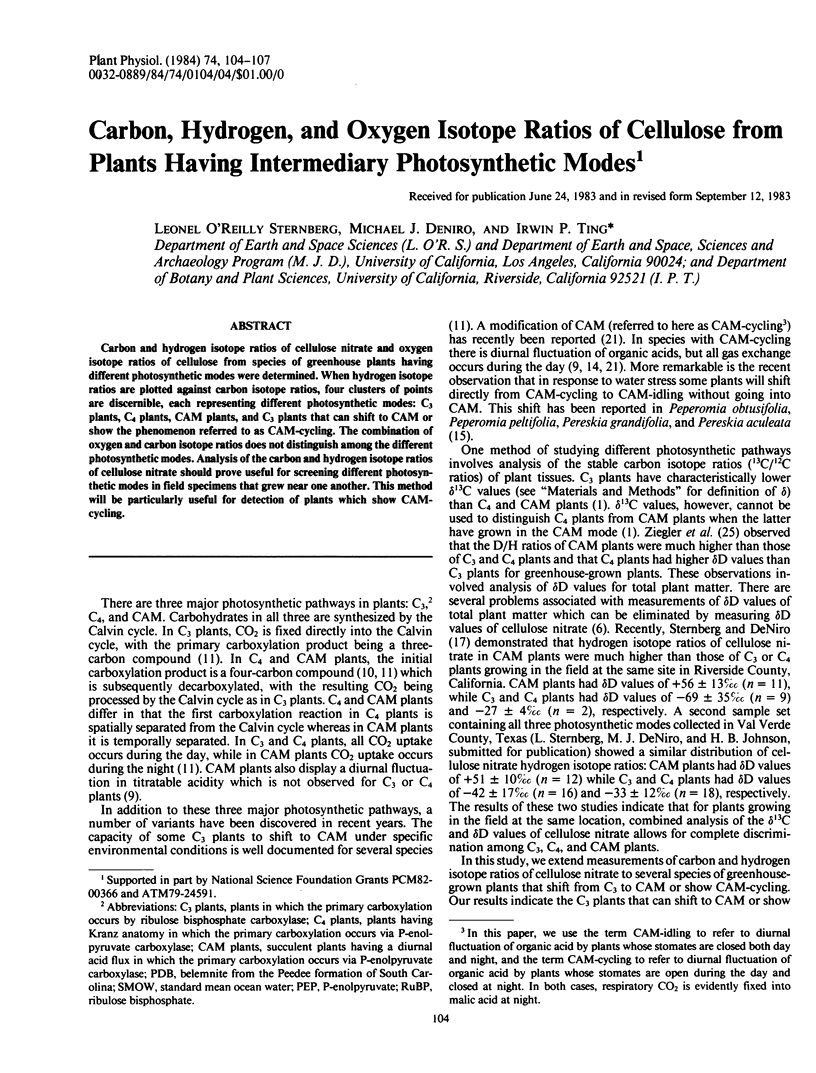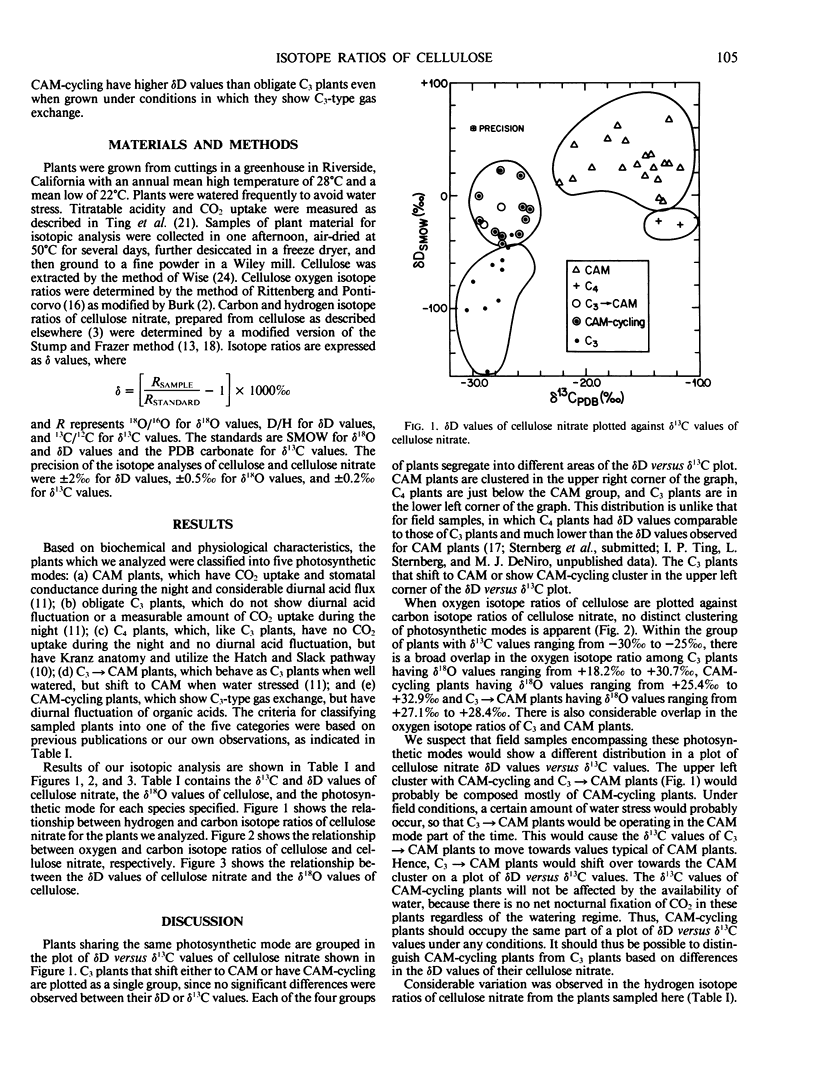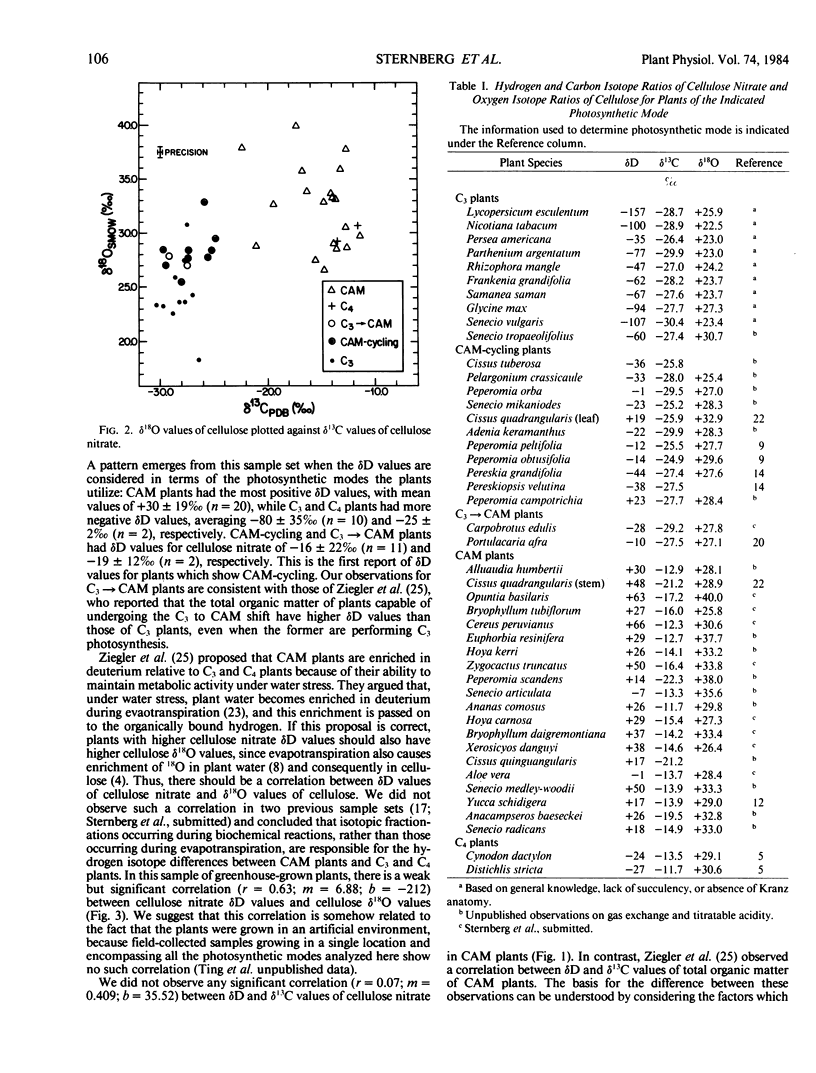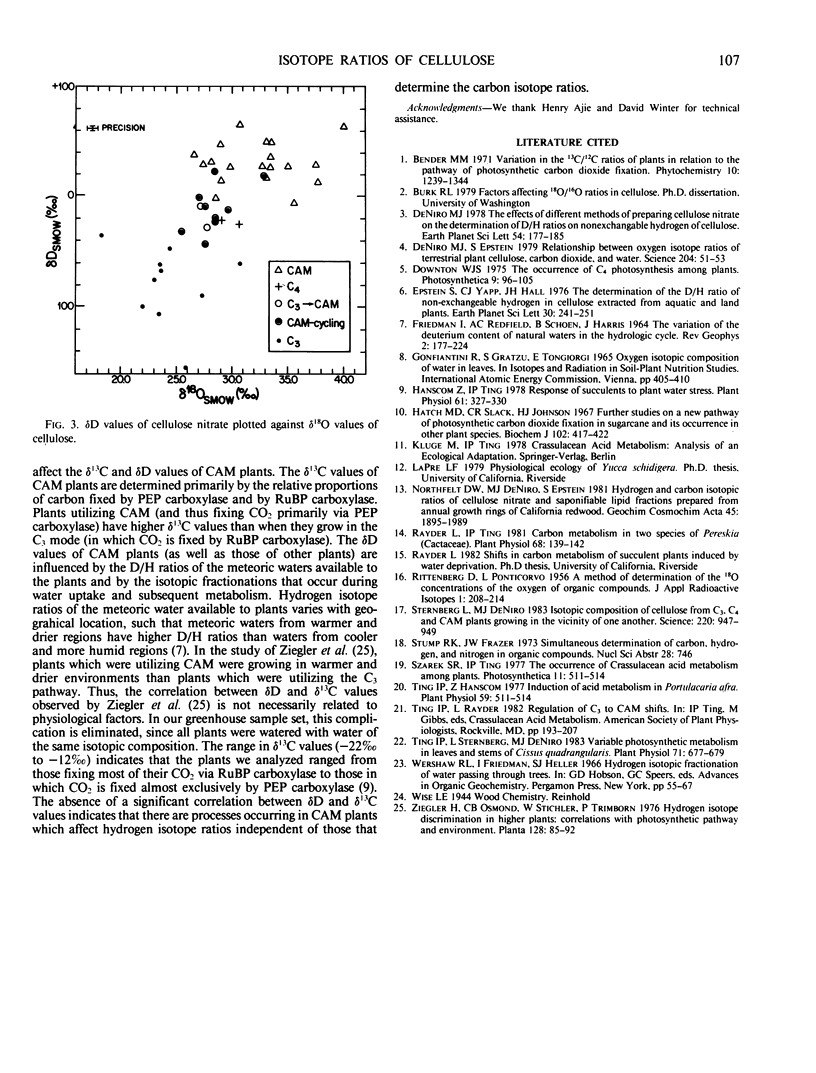Abstract
Carbon and hydrogen isotope ratios of cellulose nitrate and oxygen isotope ratios of cellulose from species of greenhouse plants having different photosynthetic modes were determined. When hydrogen isotope ratios are plotted against carbon isotope ratios, four clusters of points are discernible, each representing different photosynthetic modes: C3 plants, C4 plants, CAM plants, and C3 plants that can shift to CAM or show the phenomenon referred to as CAM-cycling. The combination of oxygen and carbon isotope ratios does not distinguish among the different photosynthetic modes. Analysis of the carbon and hydrogen isotope ratios of cellulose nitrate should prove useful for screening different photosynthetic modes in field specimens that grew near one another. This method will be particularly useful for detection of plants which show CAM-cycling.
Full text
PDF



Selected References
These references are in PubMed. This may not be the complete list of references from this article.
- Deniro M. J., Epstein S. Relationship between the oxygen isotope ratios of terrestrial plant cellulose, carbon dioxide, and water. Science. 1979 Apr 6;204(4388):51–53. doi: 10.1126/science.204.4388.51. [DOI] [PubMed] [Google Scholar]
- Hanscom Z., Ting I. P. Responses of succulents to plant water stress. Plant Physiol. 1978 Mar;61(3):327–330. doi: 10.1104/pp.61.3.327. [DOI] [PMC free article] [PubMed] [Google Scholar]
- Hatch M. D., Slack C. R., Johnson H. S. Further studies on a new pathway of photosynthetic carbon dioxide fixation in sugar-cane and its occurrence in other plant species. Biochem J. 1967 Feb;102(2):417–422. doi: 10.1042/bj1020417. [DOI] [PMC free article] [PubMed] [Google Scholar]
- PONTICORVO L., RITTENBERG D. A method for the determination of the O18 concentration of the oxygen of organic compounds. Int J Appl Radiat Isot. 1956 Nov;1(3):208–214. doi: 10.1016/0020-708x(56)90008-4. [DOI] [PubMed] [Google Scholar]
- Rayder L., Ting I. P. Carbon metabolism in two species of pereskia (cactaceae). Plant Physiol. 1981 Jul;68(1):139–142. doi: 10.1104/pp.68.1.139. [DOI] [PMC free article] [PubMed] [Google Scholar]
- Sternberg L., Deniro M. J. Isotopic Composition of Cellulose from C3, C4, and CAM Plants Growing Near One Another. Science. 1983 May 27;220(4600):947–949. doi: 10.1126/science.220.4600.947. [DOI] [PubMed] [Google Scholar]
- Ting I. P., Hanscom Z. Induction of Acid Metabolism in Portulacaria afra. Plant Physiol. 1977 Mar;59(3):511–514. doi: 10.1104/pp.59.3.511. [DOI] [PMC free article] [PubMed] [Google Scholar]
- Ting I. P., Sternberg L. O., Deniro M. J. Variable Photosynthetic Metabolism in Leaves and Stems of Cissus quadrangularis L. Plant Physiol. 1983 Mar;71(3):677–679. doi: 10.1104/pp.71.3.677. [DOI] [PMC free article] [PubMed] [Google Scholar]


